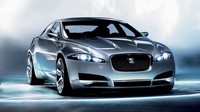Bowers & Wilkins Spiral Diffuser removes unwanted sound resonance in vehicle interiors
Technology derived from some of the world's finest home audio speakers solves sound issue within existing package space
Sound reproduction specialist Bowers & Wilkins has developed a new Spiral Diffuser tube that will help vehicle manufacturers increase sound system performance within the current and limited package restrictions that speakers occupy.
Not all sound generated by a speaker driver is good sound. The unwanted sound that emerges from the back of a working speaker cone can colour the sound coming from the front. This is often the case in automotive applications, where sounds from the rear of the speaker bounce around inside door enclosures, creating delayed, resonant noise. Using over 40 years' of experience Bowers & Wilkins has been developing solutions to significantly lower such resonances and now is transferring the expertise to the car.
In the home environment Bowers & Wilkins install a long tapering tube behind the speaker to soak up the unwanted sound, reducing colouration to minute levels. The small package restrictions of the car make this difficult, but a space-saving technology used in its flagship home theatre system, the CT800, was also found to be a perfect match for low profile automotive applications. The tube is replaced with a novel six-channel spiral diffuser that provides the 100mm tube length in only 10 percent of the depth.
"Each channel absorbs a portion of the unwanted sound energy from the back of the diaphragm," says Martin Lindsay, senior automotive business manager at Bowers & Wilkins. "The small depth permits us to use this technology even in very restricted areas, such as 'A sails' in doors where tweeters are traditionally located. We can advance performance across the range, even in high frequencies, improving clarity for piano, violin and vocals."
The patented spiral, visually similar to a turbine impeller is typically made of injection moulded plastic and can be integrated into OE speaker designs. Its small size and low weight mean that vehicle manufacturers could apply it to existing platforms with ease. In mid-range applications the diffuser design also offers significant structural benefits as the walls of the spiral tube can also be used to augment the stiffness of trim and thus lower unwanted panel vibration.
"Bowers & Wilkins strives for accurate sound reproduction, whatever the environment," continues Lindsay. "The technology, coupled with our tuning expertise offers a discernible improvement, removing unwanted noise resulting in a much cleaner, crisper sound, without significant changes to the vehicle architecture."
The Spiral Diffuser is the latest technology released by the newly formed Bowers & Wilkins Automotive Division. Using tuning expertise, novel materials and innovative design, the division assists OEMs achieve incredible sound reproduction in the challenging car environment. The company recently announced its first production system with Jaguar. The XF premium system was exclusively engineered into the new Jaguar from concept stage with experts from the two companies seeking to optimise every aspect of the car's audio environment with the single aim of achieving the best audio experience possible in a contemporary luxury car.
About Bowers & Wilkins
Founded in the UK in 1966, Bowers & Wilkins manufactures an award-winning range of loudspeakers. The company is world-renowned for its audio innovations, pioneering the use of Kevlar and diamond in its quest to design the perfect loudspeaker. Bowers & Wilkins' patented Nautilus technology, featured in its top-of-the-line products, won the company the coveted Queen's Award for Innovation in 2005. B&W loudspeaker systems serve as the 'audio reference' in leading recording studios worldwide, including London's Abbey Road. Its Steyning Research Establishment - often described as 'The University of Sound' - is widely recognised as being at the forefront of acoustic innovation.



